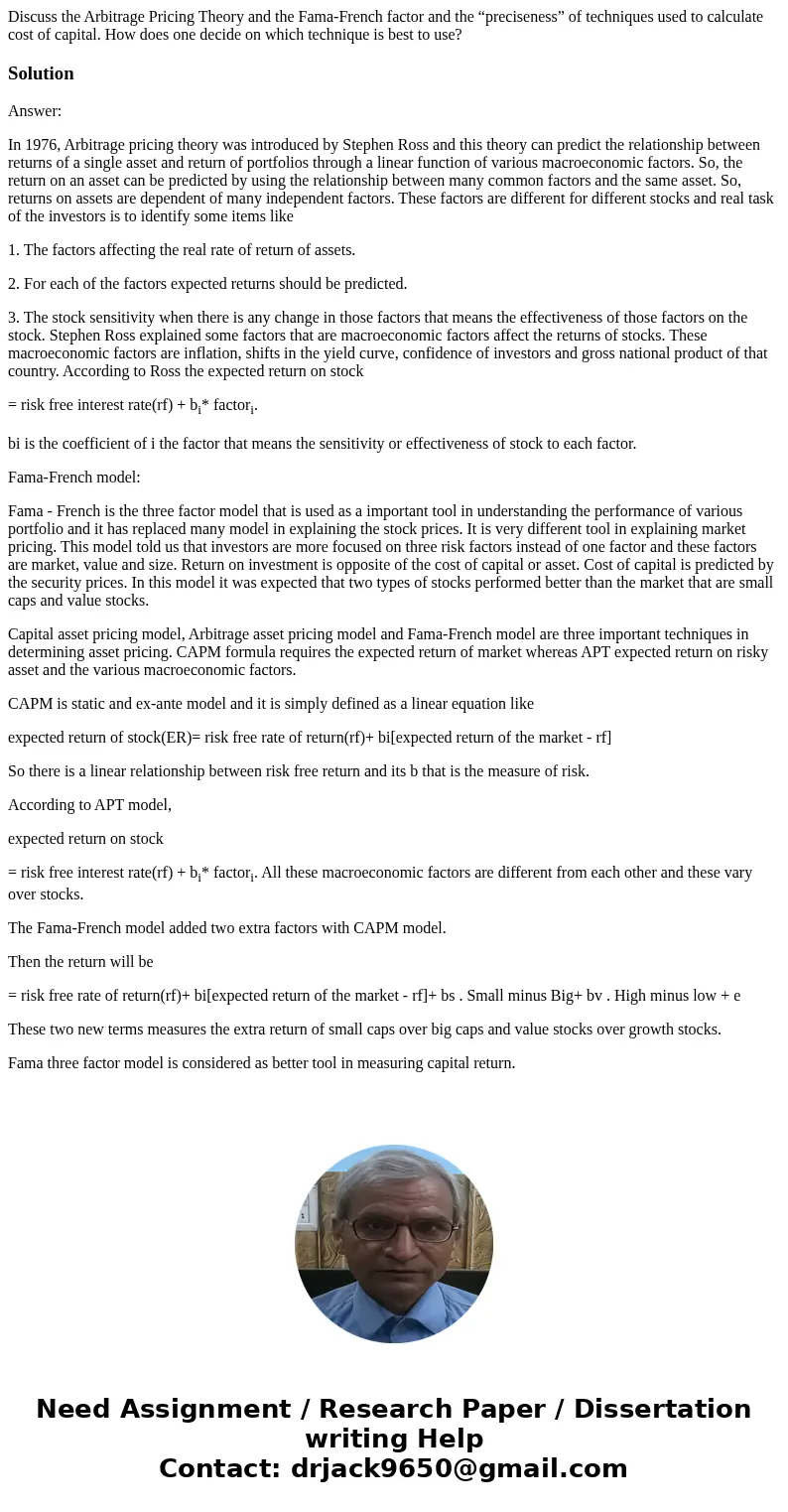Discuss the Arbitrage Pricing Theory and the FamaFrench fact
Discuss the Arbitrage Pricing Theory and the Fama-French factor and the “preciseness” of techniques used to calculate cost of capital. How does one decide on which technique is best to use?
Solution
Answer:
In 1976, Arbitrage pricing theory was introduced by Stephen Ross and this theory can predict the relationship between returns of a single asset and return of portfolios through a linear function of various macroeconomic factors. So, the return on an asset can be predicted by using the relationship between many common factors and the same asset. So, returns on assets are dependent of many independent factors. These factors are different for different stocks and real task of the investors is to identify some items like
1. The factors affecting the real rate of return of assets.
2. For each of the factors expected returns should be predicted.
3. The stock sensitivity when there is any change in those factors that means the effectiveness of those factors on the stock. Stephen Ross explained some factors that are macroeconomic factors affect the returns of stocks. These macroeconomic factors are inflation, shifts in the yield curve, confidence of investors and gross national product of that country. According to Ross the expected return on stock
= risk free interest rate(rf) + bi* factori.
bi is the coefficient of i the factor that means the sensitivity or effectiveness of stock to each factor.
Fama-French model:
Fama - French is the three factor model that is used as a important tool in understanding the performance of various portfolio and it has replaced many model in explaining the stock prices. It is very different tool in explaining market pricing. This model told us that investors are more focused on three risk factors instead of one factor and these factors are market, value and size. Return on investment is opposite of the cost of capital or asset. Cost of capital is predicted by the security prices. In this model it was expected that two types of stocks performed better than the market that are small caps and value stocks.
Capital asset pricing model, Arbitrage asset pricing model and Fama-French model are three important techniques in determining asset pricing. CAPM formula requires the expected return of market whereas APT expected return on risky asset and the various macroeconomic factors.
CAPM is static and ex-ante model and it is simply defined as a linear equation like
expected return of stock(ER)= risk free rate of return(rf)+ bi[expected return of the market - rf]
So there is a linear relationship between risk free return and its b that is the measure of risk.
According to APT model,
expected return on stock
= risk free interest rate(rf) + bi* factori. All these macroeconomic factors are different from each other and these vary over stocks.
The Fama-French model added two extra factors with CAPM model.
Then the return will be
= risk free rate of return(rf)+ bi[expected return of the market - rf]+ bs . Small minus Big+ bv . High minus low + e
These two new terms measures the extra return of small caps over big caps and value stocks over growth stocks.
Fama three factor model is considered as better tool in measuring capital return.

 Homework Sourse
Homework Sourse